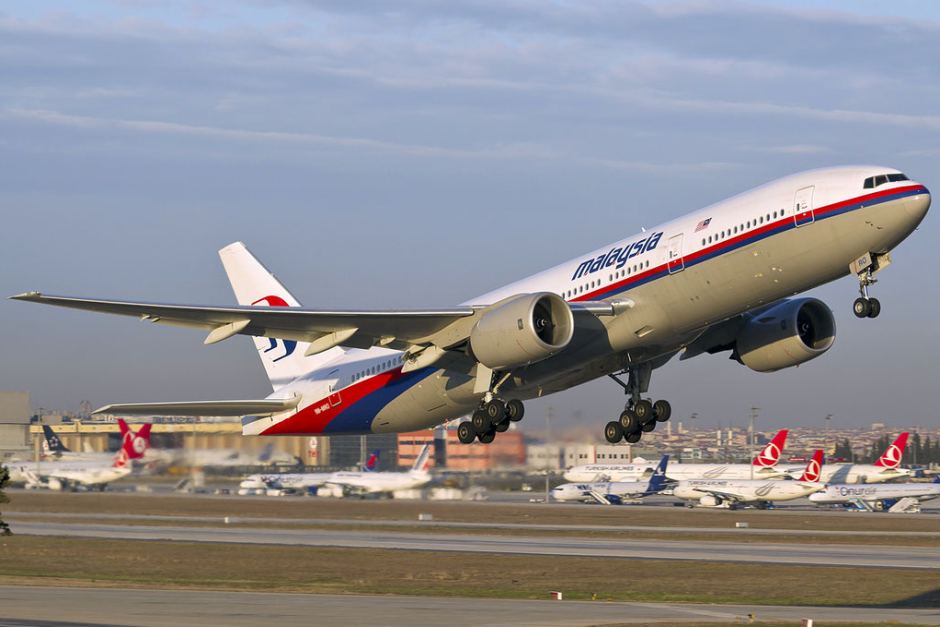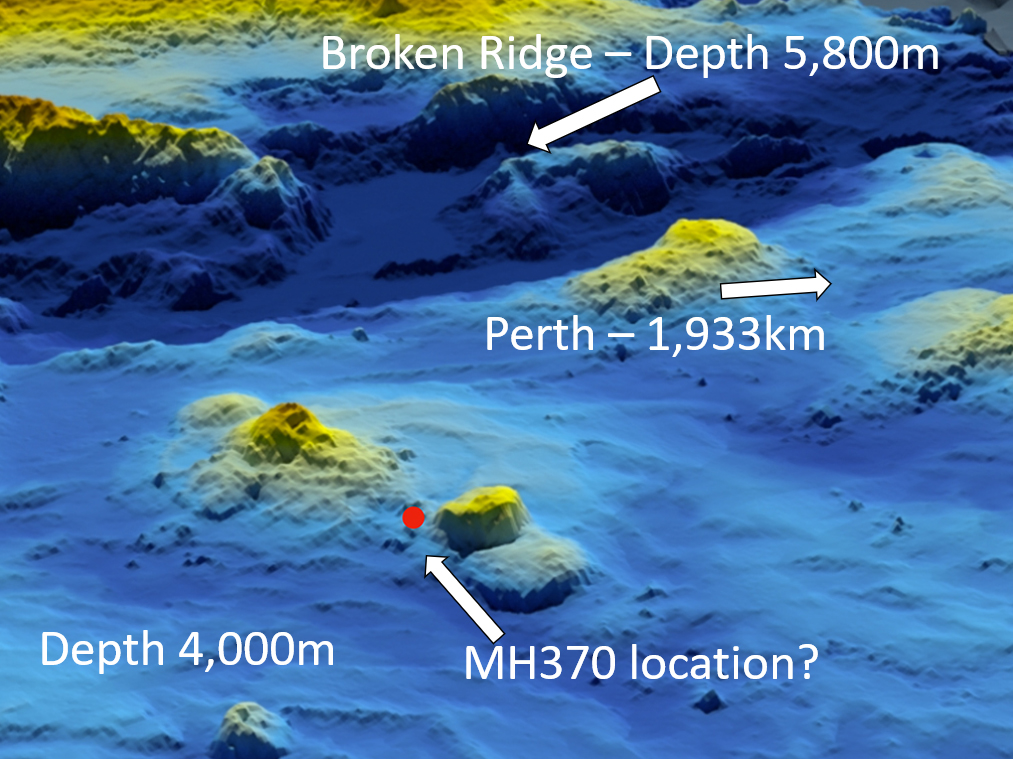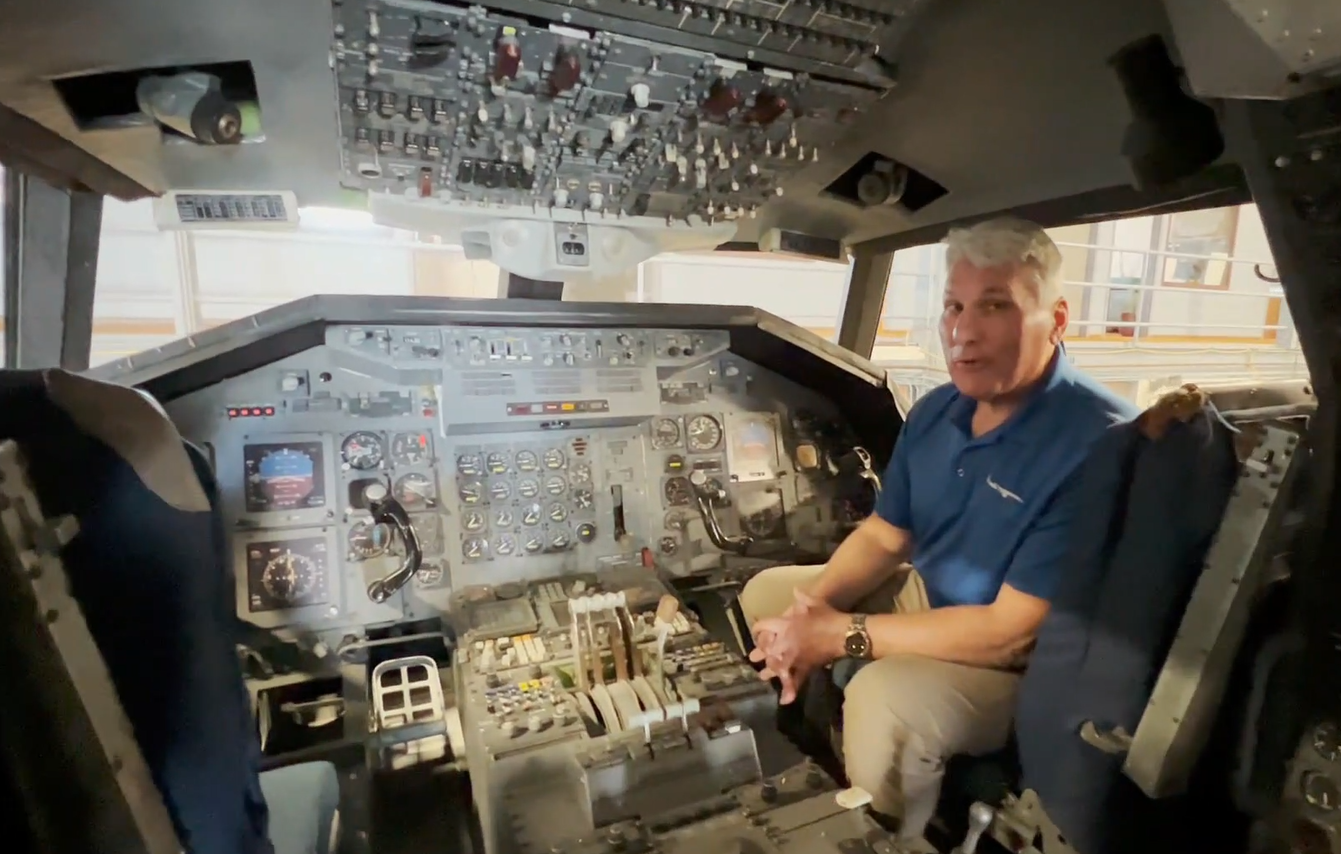Fine detail of MH370 's flightpath published
01 January, 2022
3 min read
By joining our newsletter, you agree to our Privacy Policy


Aerospace engineer Mr. Richard Godfrey has published the flight path of MH370 in fine detail with a granularity of two-minute steps and accuracy within 18nm using the revolutionary WSPRnet tracking.
In November Mr. Godfrey announced that MH370 impacted the ocean 1,933km due west of Perth at 33.177°S 95.300°E and lies at a depth of 4,000m in a very mountainous area with deep ravines and a volcano.
 The location is in the zone where the University of WA Head of Oceanography Professor Charitha Pattiaratchi claims MH370 is located.
READ: WSPRnet explain
READ: MH370: The extraordinary debris trail across the Indian Ocean
READ: MH370: chronology of major events
The Malaysia Airlines flight vanished during a flight from Kuala Lumpur to Beijing on March 8, 2014, before plunging into the southern Indian Ocean — taking 239 passengers and crew.
Mr. Godfrey has used a revolutionary technology called weak signal propagation, first revealed by AirlineRatings.com in April, to track the plane’s final movements.
Mr. Godfrey's new paper is 124 pages and follows his November revelation and has 89 candidate single link progress indicators and 35 candidate multiple links and multiple azimuth position indicators based on the GDTAAA analysis of the WSPRnet data.
"This results in over 200 WSPRnet links which are candidates for MH370 detection and tracking," Mr. Godfrey said.
"Combining the Inmarsat satellite data and Boeing performance data with the WSPRnet analysis provides a much more complete view of the MH370 flight path.
"Further combining the joint Inmarsat/Boeing/WSPRnet analysis result with the Oceanographic drift analysis by Prof. Charitha Pattiaratchi of the University of Western Australia builds confidence because the data and analyses from different independent scientific and engineering domains all point to the same MH370 crash location at 33°S close to the 7th Arc."
He adds that wreck hunter Blaine Gibson "found the majority of the floating debris items that have been recovered from around the Indian Ocean on the basis of this drift analysis."
Mr. Godfrey says his latest report "will be followed up by a technical paper. This second paper will give the technical details of each candidate detection of MH370 using the WSPRnet data and the technical details of the tracking of the MH370 flight path."
Thus far Mr. Godfrey has published 35 papers on the disappearance of MH370, including 11 papers specifically on the new revolutionary WSPRnet technology.
The location is in the zone where the University of WA Head of Oceanography Professor Charitha Pattiaratchi claims MH370 is located.
READ: WSPRnet explain
READ: MH370: The extraordinary debris trail across the Indian Ocean
READ: MH370: chronology of major events
The Malaysia Airlines flight vanished during a flight from Kuala Lumpur to Beijing on March 8, 2014, before plunging into the southern Indian Ocean — taking 239 passengers and crew.
Mr. Godfrey has used a revolutionary technology called weak signal propagation, first revealed by AirlineRatings.com in April, to track the plane’s final movements.
Mr. Godfrey's new paper is 124 pages and follows his November revelation and has 89 candidate single link progress indicators and 35 candidate multiple links and multiple azimuth position indicators based on the GDTAAA analysis of the WSPRnet data.
"This results in over 200 WSPRnet links which are candidates for MH370 detection and tracking," Mr. Godfrey said.
"Combining the Inmarsat satellite data and Boeing performance data with the WSPRnet analysis provides a much more complete view of the MH370 flight path.
"Further combining the joint Inmarsat/Boeing/WSPRnet analysis result with the Oceanographic drift analysis by Prof. Charitha Pattiaratchi of the University of Western Australia builds confidence because the data and analyses from different independent scientific and engineering domains all point to the same MH370 crash location at 33°S close to the 7th Arc."
He adds that wreck hunter Blaine Gibson "found the majority of the floating debris items that have been recovered from around the Indian Ocean on the basis of this drift analysis."
Mr. Godfrey says his latest report "will be followed up by a technical paper. This second paper will give the technical details of each candidate detection of MH370 using the WSPRnet data and the technical details of the tracking of the MH370 flight path."
Thus far Mr. Godfrey has published 35 papers on the disappearance of MH370, including 11 papers specifically on the new revolutionary WSPRnet technology.
 The location is in the zone where the University of WA Head of Oceanography Professor Charitha Pattiaratchi claims MH370 is located.
READ: WSPRnet explain
READ: MH370: The extraordinary debris trail across the Indian Ocean
READ: MH370: chronology of major events
The Malaysia Airlines flight vanished during a flight from Kuala Lumpur to Beijing on March 8, 2014, before plunging into the southern Indian Ocean — taking 239 passengers and crew.
Mr. Godfrey has used a revolutionary technology called weak signal propagation, first revealed by AirlineRatings.com in April, to track the plane’s final movements.
Mr. Godfrey's new paper is 124 pages and follows his November revelation and has 89 candidate single link progress indicators and 35 candidate multiple links and multiple azimuth position indicators based on the GDTAAA analysis of the WSPRnet data.
"This results in over 200 WSPRnet links which are candidates for MH370 detection and tracking," Mr. Godfrey said.
"Combining the Inmarsat satellite data and Boeing performance data with the WSPRnet analysis provides a much more complete view of the MH370 flight path.
"Further combining the joint Inmarsat/Boeing/WSPRnet analysis result with the Oceanographic drift analysis by Prof. Charitha Pattiaratchi of the University of Western Australia builds confidence because the data and analyses from different independent scientific and engineering domains all point to the same MH370 crash location at 33°S close to the 7th Arc."
He adds that wreck hunter Blaine Gibson "found the majority of the floating debris items that have been recovered from around the Indian Ocean on the basis of this drift analysis."
Mr. Godfrey says his latest report "will be followed up by a technical paper. This second paper will give the technical details of each candidate detection of MH370 using the WSPRnet data and the technical details of the tracking of the MH370 flight path."
Thus far Mr. Godfrey has published 35 papers on the disappearance of MH370, including 11 papers specifically on the new revolutionary WSPRnet technology.
The location is in the zone where the University of WA Head of Oceanography Professor Charitha Pattiaratchi claims MH370 is located.
READ: WSPRnet explain
READ: MH370: The extraordinary debris trail across the Indian Ocean
READ: MH370: chronology of major events
The Malaysia Airlines flight vanished during a flight from Kuala Lumpur to Beijing on March 8, 2014, before plunging into the southern Indian Ocean — taking 239 passengers and crew.
Mr. Godfrey has used a revolutionary technology called weak signal propagation, first revealed by AirlineRatings.com in April, to track the plane’s final movements.
Mr. Godfrey's new paper is 124 pages and follows his November revelation and has 89 candidate single link progress indicators and 35 candidate multiple links and multiple azimuth position indicators based on the GDTAAA analysis of the WSPRnet data.
"This results in over 200 WSPRnet links which are candidates for MH370 detection and tracking," Mr. Godfrey said.
"Combining the Inmarsat satellite data and Boeing performance data with the WSPRnet analysis provides a much more complete view of the MH370 flight path.
"Further combining the joint Inmarsat/Boeing/WSPRnet analysis result with the Oceanographic drift analysis by Prof. Charitha Pattiaratchi of the University of Western Australia builds confidence because the data and analyses from different independent scientific and engineering domains all point to the same MH370 crash location at 33°S close to the 7th Arc."
He adds that wreck hunter Blaine Gibson "found the majority of the floating debris items that have been recovered from around the Indian Ocean on the basis of this drift analysis."
Mr. Godfrey says his latest report "will be followed up by a technical paper. This second paper will give the technical details of each candidate detection of MH370 using the WSPRnet data and the technical details of the tracking of the MH370 flight path."
Thus far Mr. Godfrey has published 35 papers on the disappearance of MH370, including 11 papers specifically on the new revolutionary WSPRnet technology.Next Article
2 min read
Qantas triples profit but misses mark

Get the latest news and updates straight to your inbox
No spam, no hassle, no fuss, just airline news direct to you.
By joining our newsletter, you agree to our Privacy Policy
Find us on social media
Comments
No comments yet, be the first to write one.

